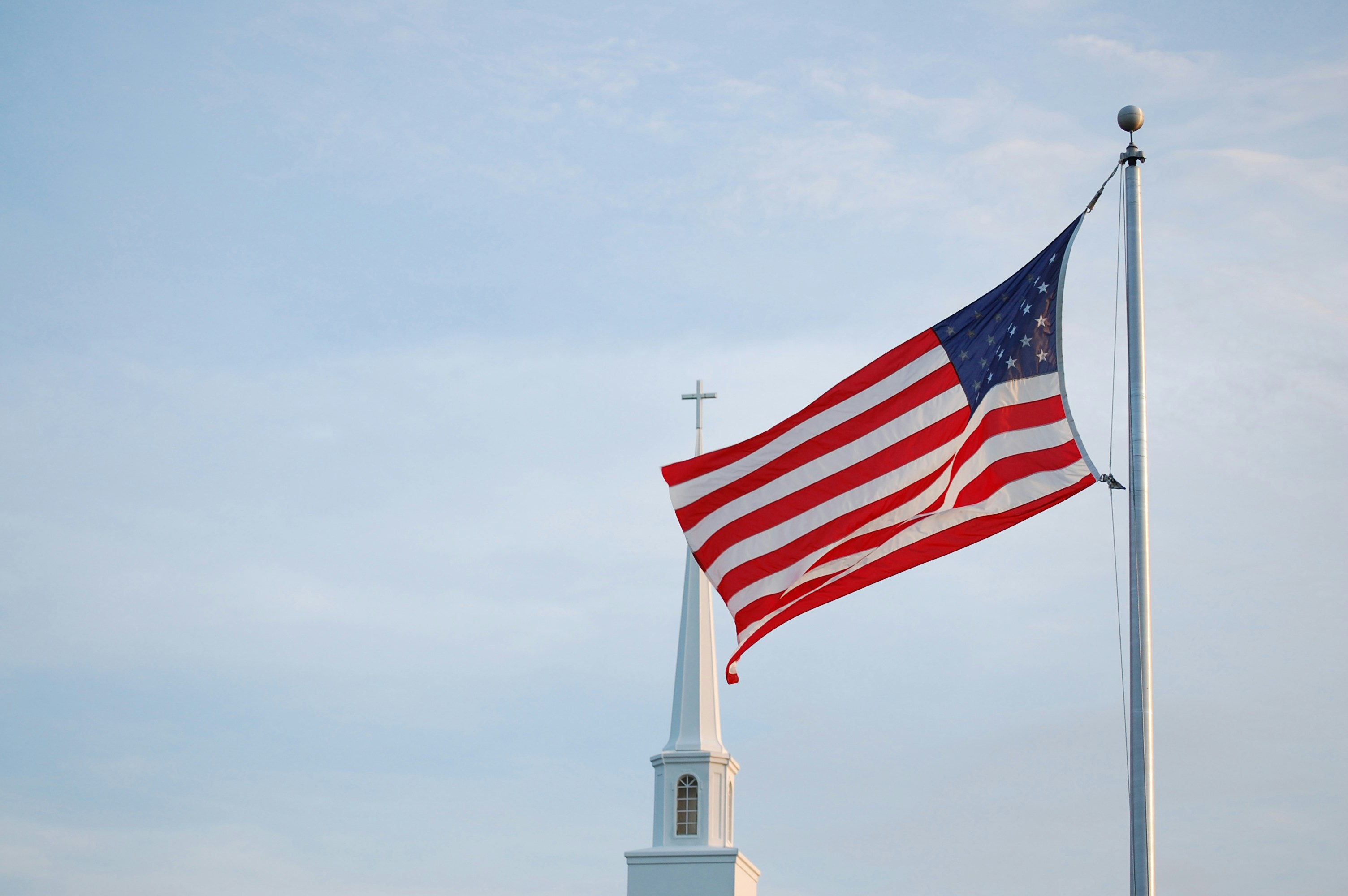The Decline of Christianity in America: An Analysis of Current Trends
Introduction to the Decline of Christianity
In recent years, the landscape of religious affiliation in the United States has undergone significant transformations, particularly regarding Christianity. This decline, characterized by a notable decrease in church attendance, loss of traditional values, and growing secularism, raises critical questions about the future of faith in American society. The decline of Christianity is not just a matter of dwindling numbers; it reflects shifting cultural dynamics and changing societal norms that influence individuals’ perceptions of spirituality and community.
As we examine the factors contributing to the decline, it becomes evident that this phenomenon is more than a simple numerical decrease. It encompasses a complex interplay of sociological factors, including increasing diversity in religious beliefs, the rise of the so-called “nones” (those identifying as having no religion), and a growing focus on individualism over collective faith practices. The decline of Christianity in America thus mirrors broader shifts toward pluralism and personal belief systems that are not necessarily tied to traditional religious institutions.
Understanding the implications of this trend is crucial for grasping the broader cultural narratives that shape contemporary America. As Christianity faces various challenges—from societal values that prioritize autonomy, to younger generations actively seeking alternative frameworks for meaning—the role of faith and organized religion is in flux. This exploration will provide insight into how deeply entrenched beliefs are adapting or dissolving amid the challenges posed by modernity, technology, and cultural exchanges.
As we delve into the specifics of this decline, it is essential to recognize its significance not only for religious communities but also for the societal fabric of the nation. Within this context, we can better analyze the ongoing shifts in ideology and practice, opening up discussions about the future relevance of Christianity in America.
Current Demographics of Christianity in the U.S.
Christianity remains the predominant religion in the United States, despite observable trends indicating a decline in its affiliation over recent years. According to the Pew Research Center, as of 2021, approximately 63% of American adults identified as Christians, which marks a significant drop from around 75% in 2007. This decline has sparked discussions regarding the evolving religious landscape and the reasons behind these shifts. Among Christians, various denominations contribute to diversity within the faith, with Evangelical Protestants constituting 25.4%, Mainline Protestants representing 14.7%, and Catholics at about 20.8%. Other smaller Christian groups, including Orthodox Christians, further enhance the tapestry of American Christianity.
While Christianity continues to hold the status of the majority religion, the rise of religiously unaffiliated individuals—often referred to as the “nones”—has become a notable trend. This cohort, which includes atheists, agnostics, and those who identify as spiritual but not religious, has grown significantly, accounting for approximately 30% of the population by the latest estimates. This shift may be indicative of broader societal changes, with younger generations tending to be less religiously affiliated than their predecessors. Chart data from the past decade illustrates a stark contrast, showing the percentage of religious affiliation decreasing, while simultaneously, the category of religiously unaffiliated is experiencing growth.
Additionally, the increasing racial and ethnic diversity among adherents of Christianity contributes to the changing landscape. For instance, Latino Protestants and African American churches have seen surges in membership, which has implications for the overall demographic of Christianity. As these trends continue to evolve, it is essential to acknowledge both the resilience of Christianity in America and the complexities surrounding its demographic shifts, underscoring that the landscape of religious belief is in flux.
Historical Context of Religious Shifts
The historical context of Christianity in America is marked by a series of profound transformations that have shaped both individual beliefs and the broader cultural landscape. The origins of Christianity in the United States can be traced back to the early colonial period, when various Christian denominations sought refuge and autonomy from European religious persecution. The establishment of communities founded on Christian principles, such as the Puritans in New England and Quakers in Pennsylvania, laid the groundwork for a deeply ingrained religious culture.
The Great Awakening during the 18th century ignited a wave of religious fervor across the American colonies. This revivalist movement encouraged personal piety, emotional expression, and a direct relationship with God, significantly impacting the growth of evangelicalism. The subsequent Second Great Awakening further cemented Christianity’s influence in American society, expanding its reach and leading to the establishment of numerous denominations. The social reforms that emerged, including the abolitionist movement and women’s suffrage, were often driven by Christian ideals, underscoring the religion’s central role in advocating for moral and social change.
However, the 20th century heralded significant changes as America became increasingly diverse, both culturally and religiously. The post-World War II era saw a booming interest in secularism alongside the rise of alternative spiritualities. The civil rights movement, while largely supported by Christian leaders, also revealed tensions within the faith regarding issues of race, equality, and justice. The rapid growth of religious pluralism challenged the dominance of traditional Christian values, leading to a gradual decline in church attendance and participation.
In examining the historical context of these religious shifts, it is evident that Christianity in America has undergone a remarkable evolution. Understanding these changes can provide critical insights into the current trends influencing religious belief and practice in contemporary society.
Analysis of Declining Participation Rates
The decline in participation rates among Christians in the United States is a multifaceted phenomenon influenced by various societal trends. One of the most significant factors is the rise of secularism. As American society becomes progressively inclusive of diverse belief systems, traditional religious institutions are facing challenges in maintaining their influence over people’s lives. This shift is accompanied by a growing acceptance of secular lifestyles, where individuals prioritize personal experiences and scientific reasoning over religious teachings.
Additionally, changing cultural values play a crucial role in shaping the religious landscape. Younger generations, in particular, exhibit a marked departure from conventional religious practices. They tend to prioritize values such as individualism and self-expression, often seeing these principles as incompatible with organized religion’s structure and doctrines. This divergence can partly be attributed to the availability of information and alternative perspectives, which have resulted in a more critical view of established religious practices.
Furthermore, the impact of technology on religious engagement cannot be overlooked. The proliferation of digital platforms has transformed how individuals connect with faith-based communities. While some congregations have embraced these tools for outreach and engagement, others have found that online resources and alternative spiritual movements have siphoned off participants. Many individuals now consume spiritual content through social media or online sermons, which sometimes lack the communal aspect that traditional attendance provided.
As a result, many find that their spiritual needs are being met without the requirement of physical attendance at places of worship, leading to a decline in participation. This trend highlights the evolving nature of spirituality in America, raising questions about the future role of Christianity in a landscape increasingly dominated by secular values and digital avenues of engagement.
Comparative Analysis with Other Religious Groups
The religious landscape of the United States has undergone significant transformation over recent decades, marked primarily by a notable decline in Christianity. This trend, however, is contrasted by the growth and stability observed within other religious groups, offering a comprehensive view of the evolving faith dynamics in America. Notably, religions such as Islam, Hinduism, Buddhism, and various non-traditional spiritual movements have not only maintained but, in many instances, experienced substantial growth. This suggests a shift in public interest towards alternative spiritual paths.
Islam, for example, has seen a marked increase in followers, particularly among younger generations and ethnic minorities. Factors contributing to this growth include a rising awareness and acceptance of diverse cultures as well as the appeal of community and family values that Islam emphasizes. Reports indicate that Muslim congregations are expanding, with new mosques being established to accommodate the increasing number of converts and adherents.
Similarly, Hinduism and Buddhism have gained traction in the U.S., especially as cultural exchange and immigration patterns have diversified. As these faiths promote meditation, mindfulness, and holistic living, they resonate with individuals seeking alternatives to traditional religious practices. Moreover, many Americans are gravitating towards New Age spiritualities that incorporate elements of Eastern philosophies, further reflecting a departure from mainstream Christianity.
In contrast, Christianity currently faces challenges in compelling the younger population, who may find traditional teachings unrelatable or restrictive. While some denominations attempt to adapt by modernizing their messages or outreach methods, retention rates have not improved significantly. This comparative analysis reveals that while Christianity experiences a decline, other religious groups are capitalizing on cultural shifts, underscoring the importance of understanding how different faiths respond to contemporary challenges within the American religious milieu.
Impact of Decline on Christian Communities
The decline of Christianity in America has significant implications for local communities, social structures, and religious institutions. As congregant numbers decrease, the influence of churches on community cohesion and social support networks may weaken, impacting various aspects of daily life. Many communities traditionally rely on church organizations for moral guidance, social interaction, and charitable services. With fewer participants, the vibrancy of these institutions diminishes, potentially leading to increased isolation among residents.
Church participation not only provides spiritual fulfillment but also serves as a foundation for community outreach initiatives. When churches experience declining attendance, they typically have fewer resources—both human and financial—to devote to community service. Many outreach programs aimed at supporting the needy, fostering youth development, or promoting education may face cuts, limiting the church’s role as a key player in addressing social issues like poverty and homelessness. This loss of service impact can leave vulnerable populations without crucial support systems.
Financial stability is another area significantly affected by dwindling congregant numbers. Churches depend primarily on donations from their members to fund their operations, maintenance, and outreach initiatives. A notable drop in attendance directly correlates with decreased financial contributions, creating a cycle that may lead to even further declines in participation. Reduced funding can result in the downsizing of church activities, staff layoffs, and the inability to maintain facilities. When churches struggle financially, their mission to serve the community can be severely compromised, further eroding trust and engagement among current and prospective members.
The ramifications extend beyond immediate religious contexts; they challenge the broader social fabric of communities. Without the unifying force of active churches, local civic participation may diminish, potentially leading to decreased volunteerism and a weakening of social bonds. Consequently, the decline of Christianity in America poses profound questions regarding the future of community resilience and support networks.
The Role of Younger Generations
In recent years, younger generations have exhibited a marked shift in their relationship with Christianity, often characterized by growing spiritual independence while distancing themselves from traditional religious affiliations. This phenomenon is evident in various surveys and studies, which indicate that a significant percentage of millennials and Generation Z individuals identify as spiritual but not religious. This trend has implications for the future of Christianity in America.
The rise of the “nones,” a term used to describe individuals who select “none” when asked about their religious affiliation, is particularly pronounced among younger people. Many members of these generations express a sense of disillusionment with organized religion, perceiving it as outdated or irrelevant to their lives. This feeling is often coupled with a desire for personal spirituality that emphasizes individual experience over institutional doctrine. As a result, younger generations tend to favor practices such as meditation, mindfulness, and other holistic approaches that may not be aligned with traditional Christian teachings.
This shift also represents a broader cultural movement towards inclusivity and diversity in spiritual practices. Many young people are increasingly drawn to interfaith dialogues and non-denominational forms of worship, seeking out communities where they feel a sense of belonging without the constraints of conventional religious structures. This growing preference for personal spirituality poses challenges for established churches, which must adapt to remain relevant in a changing landscape.
Moreover, this generational divergence in attitudes towards faith can be attributed to various social factors, including increased access to information via the internet and the influence of social justice movements. As younger individuals become more aware of global issues, they often find themselves reassessing the role of faith in their lives, leading to the pursuit of spirituality that aligns with their values and beliefs. Thus, the evolving relationship of younger generations with Christianity suggests a pivotal transformation in the religious landscape of America.
Responses from Christian Leaders and Organizations
In light of the declining trend of Christianity in America, various Christian leaders and organizations have mobilized to address the challenges faced by the faith community. Recognizing the need for rejuvenation, many have initiated outreach programs designed to inspire deeper engagement within local communities. These revitalization efforts often focus on modernizing worship experiences and making church attendance more appealing, particularly to younger demographics who may feel disconnected from traditional practices.
One significant response has been the development of innovative church services that incorporate contemporary music, technology, and interactive elements. By appealing to a younger audience’s preferences, these initiatives aim to create an inviting atmosphere. Additionally, many congregations have begun to emphasize the importance of community service, encouraging members to engage directly with social issues affecting their neighborhoods. This approach not only fosters spiritual growth but also enhances the church’s role as a vital community resource.
Further, Christian leaders are increasingly utilizing social media platforms and digital outreach strategies to connect with younger generations. By sharing testimonies, teachings, and community stories online, these organizations aim to cultivate a sense of belonging among individuals who may not otherwise participate in traditional church activities. Many churches are creating online platforms for virtual worship services, making it easier for individuals to engage and maintain their faith from the comfort of their homes.
Moreover, church leaders emphasize intergenerational engagement, encouraging mentorship programs that connect older church members with younger ones. These programs not only transfer valuable religious knowledge but also promote community cohesion and an understanding of diverse perspectives within the faith. Through a combination of innovative outreach initiatives and community engagement, Christian organizations strive to revitalize their presence in American society and foster a renewed interest in church participation.
Conclusion: The Future of Christianity in America
The decline of Christianity in America has raised significant questions about the future of faith communities within the country. The observable trends suggest that traditional religious practices are waning, prompting a reevaluation of how Christianity is perceived and practiced in contemporary society. Various factors contribute to this shift, including rising secularism, increasing diversity of beliefs, and a growing skepticism toward organized religion. These elements indicate a transformative period in which Christianity may need to adapt to remain relevant.
One important aspect of this decline is the generational shift, where younger individuals are increasingly identifying as “nondenominational” or disaffiliating from religious institutions altogether. This trend often reflects a broader search for meaning and community outside traditional frameworks. As younger generations seek spaces that align with their progressive values, established churches may need to reconsider their approaches and messages to attract a changing demographic. This may involve the creation of more inclusive dialogues that address contemporary social issues such as inequality, climate change, and personal autonomy.
Moreover, Christianity’s future in America may hinge on its ability to engage with new forms of spirituality that prioritize personal experiences over institutional affiliations. In an era marked by digital communication, virtual worship communities have gained popularity, offering alternative ways to connect with spirituality and religious practices. Churches that embrace technological innovations and foster online engagement may likely see sustained participation.
In conclusion, the trajectory of Christianity in America suggests a complex interplay between decline and transformation. The future of Christian communities may very well depend on their adaptability and willingness to confront cultural changes head-on, fostering inclusive environments that resonate with a diverse population. As society continues to evolve, the challenge and opportunity will be to redefine faith in a manner that honors tradition while embracing progress.












Leave a Reply
You must be logged in to post a comment.